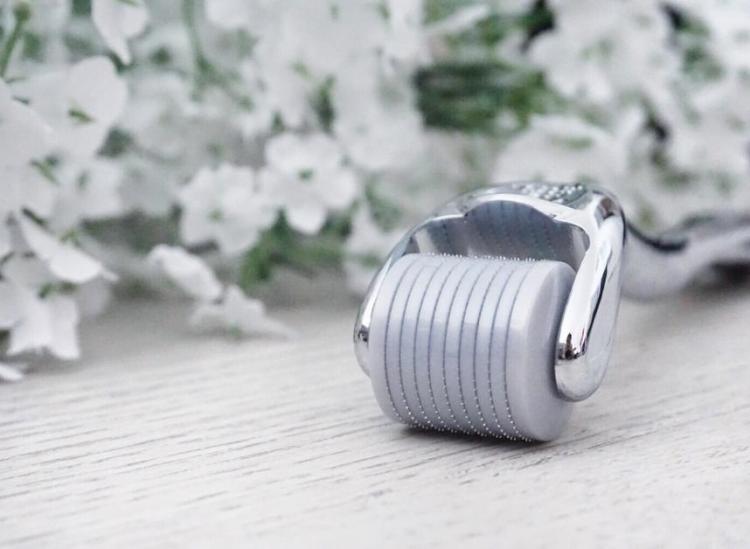Here’s The Scoop On The Trendy Skincare Tool People Can’t Stop Talking About

@teaea
Derma rolling is all the rage in the world of skincare these days, promising everything from scar reduction to wrinkle removal to that youthful glow every woman craves. But beyond the occasional Instagram testimonial, do any of us really know what derma rolling involves?
We sure as hell didn’t, so we decided to educate ourselves (and you by default). The process seems like a seriously scary DIY treatment, but it can be done at home — and with effective results — if you’d rather not shell out hundreds of dollars at the spa. Just make sure you really know what you’re doing.
Derma Rolling 101
Derma rolling, or microneedling, is the act of inserting hundreds of teeny-tiny needles into the surface of your skin with a rolling or stamping device. The needles create a bunch of microscopic wounds, which actually isn’t as bad as it sounds.
The pinpricks stimulate additional collagen and elastin production because those are the proteins used to regenerate and heal broken skin. And we don’t need to tell you how valued collagen is in the skincare world, do we? People are drinking it, pouring the powdered form into their breakfast smoothies and even popping collagen supplement pills to try and benefit from its age-defying properties. So you might as well try to get your body to naturally create more of it, right?
Not All Needles Are Created Equal
When it comes to the roller device itself, there are several factors to consider — the first being needle length. Depending on the aesthetic issue you’re trying to remedy, you’ll need varying sizes of needles. For example, larger pores and blemishes only require 0.25-millimeter needles, whereas stretch marks can use ones eight times that length. (Ouch.)
If you’re really wanting to go the home spa route, know that rollers with needles longer than 0.3 millimeters are not cleared by the Food and Drug Administration. So for treatments that suggest longer needles, you’ll definitely want to take proper precaution and see a professional instead. But if all you’re hoping to do is make yourself less prone to blackheads, careful use of an approved roller is acceptable. Bonus: Plenty small-needle rollers come in under the $15 mark on Amazon.
Cleanliness Is Key
Don’t go anywhere near your face with that thing until you’ve sterilized it with isopropyl alcohol. This disinfectant will prevent you from shoving any unwanted bacteria directly into your top layers of skin. You need to clean it before and after every single use. You also need to wash your face with a gentle soap before you begin so you have a clean slate to work with. If you want to swipe a cotton ball of isopropyl alcohol across your face as well, it can’t hurt. The cleaner, the better.
The Healing Process
The amount of time your skin will need to recover from derma rolling depends entirely on the length of the needles you chose and how sensitive your skin is naturally. But if you’re using an FDA-approved, short-needle roller at home — and with correct form — you shouldn’t see any visible pierce marks on your skin afterward. (Here’s a great step-by-step guide to using a derma roller without hurting yourself.) A little swelling is likely, but it reduces within a few hours. It’s acceptable to derma roll every other day if you have normal, surprise-free experiences the first few times around. (But every day is a new day, so always listen to your body.)
We still recommend consulting with your dermatologist before taking needles to the face. It’s a simple added step that could save you from a world of unnecessary pain, not to mention botched results if you use the derma roller incorrectly. And your doctor will probably have some helpful insights directly related to your skin specifically and the current treatment and tool options available on the market. Gather all of the information you can before taking on this DIY skincare routine.
RELATED
This Is Officially The Best Way To Wash Your Face
Why You Should Go Organic With Your Skincare Products
I Traded Face Moisturizer For Essential Oils And It Was A Game Changer











